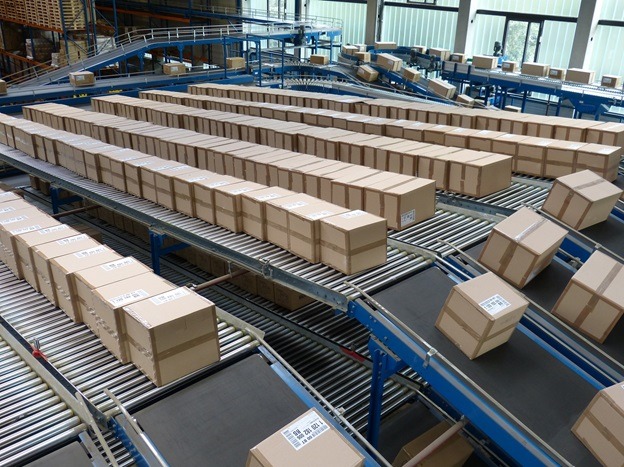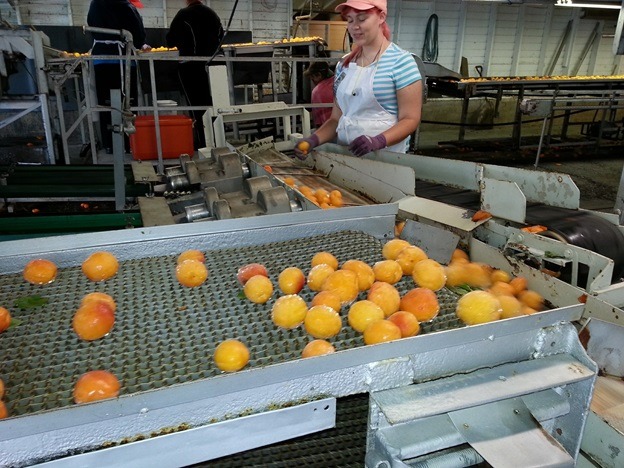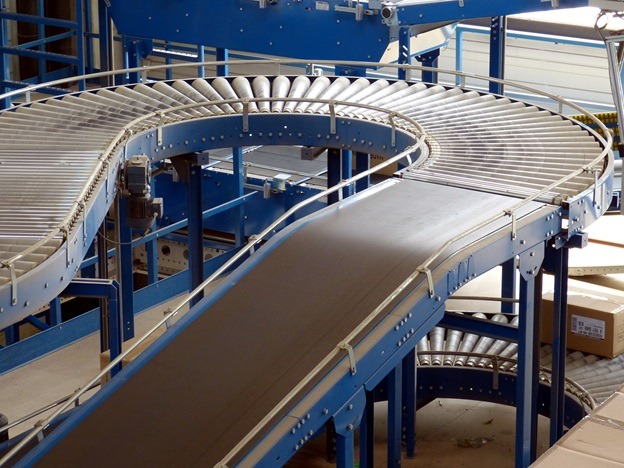Conveyor belts are one of the numerous transportation methods used in manufacturing industries. It is the carrying medium of a belt conveyor system. This machine can consist of two or more pulleys that are also called drums, with a closed, endless loop of carrying medium (the conveyor belt) that rotates around them.
In this system, one or more pulleys are powered to rotate the belt. The powered pulley is referred to as the drive pulley while the unpowered is known as the idler pulley.
Before the invention of this system, factories made use of human labor for conveying products and materials throughout the factory. This method was very slow and as a result, wasn’t very productive. Now with conveyors that are automatic and reliable, production and distribution in manufacturing industries have become much faster and organized. Click here to learn about the history of this system.
How They Work
Conveyor belts are the most versatile and the least expensive of all powered conveyors. They can be used to carry materials around the factory in a straight line or curved line. They also work for different elevations, that is, they can also convey products up or down.
As earlier mentioned, one or more pulleys are powered in a belt conveyor system. The powered pulley propels the belt forward creating a push effect on the materials loaded on it. Both light and heavy objects of various sizes can be transported on this machine making it very efficient and reliable.
Types of Conveyor Belts
Over the years, different types of conveyor belts have been created for various purposes. Some of the top conveyor belts you’ll find include:
Flat Belts
These are used in transporting items within a factory or manufacturing plant. They are incredibly versatile because its belt can be made with different materials that could be natural or synthetic. This system is suitable in manufacturing plants with slow assembly lines.
Roller Beds
Although commonly used for postal sorting and in airports for handling baggage, roller beds still function well in factories. They consist of rollers that are made for specific production requirements like the speed or weight of items that are conveyed along the belt.
Modular Belts
This system is very easy to repair and maintain as opposed to other types because they are made of numerous interlocked pieces made up of hard plastic that can be easily replaced without having to discard the entire belt. They are extremely resistant to sharp materials making them very durable.
Modulars are useful in production lines that involve carrying items around corners. They can be made to travel straight or bend in just about any way with a single belt and motor. Because they can be easily cleaned, this system is usually employed in food manufacturing companies.
Incline-decline Belts
They are used in factories for carrying items up and down. They are made of rough belts to ensure items conveyed up do not roll down.
Cleated Belts
A cleated belt system is made up of barriers that keep loose materials in place when conveyed to elevated heights. There are four main types of cleats, each having a unique application. They are:
- Forward-Leaning Capital “L”
- Inverted Capital “T”
- Lugs and pegs
- Inverted “V”
Sanitary-Washdown Belts
This conveyance system is used commonly in food and pharmaceutical industries where sterilization cleaning processes are employed. These belts are wired and are easy to clean. They are used in carrying items with extremely high temperatures because of their durability and resistance to hot oil and glaze.
Curved Belts
These belts that have curves up to 180 degrees are used to transport items around bends and corners and to maximize floor space. They typically are made of flat belts because modulars use straight runs before and after a bend or curve. Curved belts are mostly used for bag handling to change the direction of conveyed items.
Common Conveyor Belt Issues
As with any other system, this conveyor system has drawbacks that need to be checked and prevented regularly. Some of these issues are:
1. Mis-tracking
Conveyors are meant to track centrally for them to run properly. However, there are times when the movement of the belt along the rollers is uneven, this is called mis-tracking.
Mis-tracking can cause problems like uneven wearing of belts and material spillage. The latter can be hazardous to workers.
This issue can be caused by a number of factors, the common one being bad idler spacing, a worn roller, and a damaged belt. Mis-tracking can be prevented by routinely inspecting the overall structure of the system and ensuring every component is in top shape.
2. Carryback
A carry back occurs when a material remains on a conveyor after being discharged. Carryback is the most common issue with conveyor belt systems.
Carryback is an issue because it disrupts the flow of materials along a conveyor and creates a mess. They also cause important parts of the system like idlers and rollers to degrade faster making for an increase in maintenance costs.
This issue is mostly caused by materials that are sticky and can be prevented by installing belt cleaners at both ends of the machine. Carrybacks should be kept to a minimum to ensure the work environment remains safe for workers.
3. Belt slippage
This occurs when the belt loses its grip, failing to turn properly around the pulley. It mostly occurs around the drive-head part of a pulley.
This issue reduces the efficiency of this machine which in turn affects production negatively. It is caused by worn pulley heads, low temperature, and inadequate belt tension, among other things. Check out https://www.coveya.co.uk/do-you-want-to-know-how-to-maintain-your-conveyor/ for a better understanding of how to maintain conveyor belts.
Conclusion
These days, conveyor belt systems can be found in just about any place that needs items to be transported automatically in a controlled environment. Their relatively low cost and versatility make them the preferred choice of conveyor systems by many manufacturers.
Also, the issues that come with using this system can easily be prevented by routine inspections. However, in the event that one or more of these issues occur, the cost of repair and replacement of damaged parts is still very affordable.



